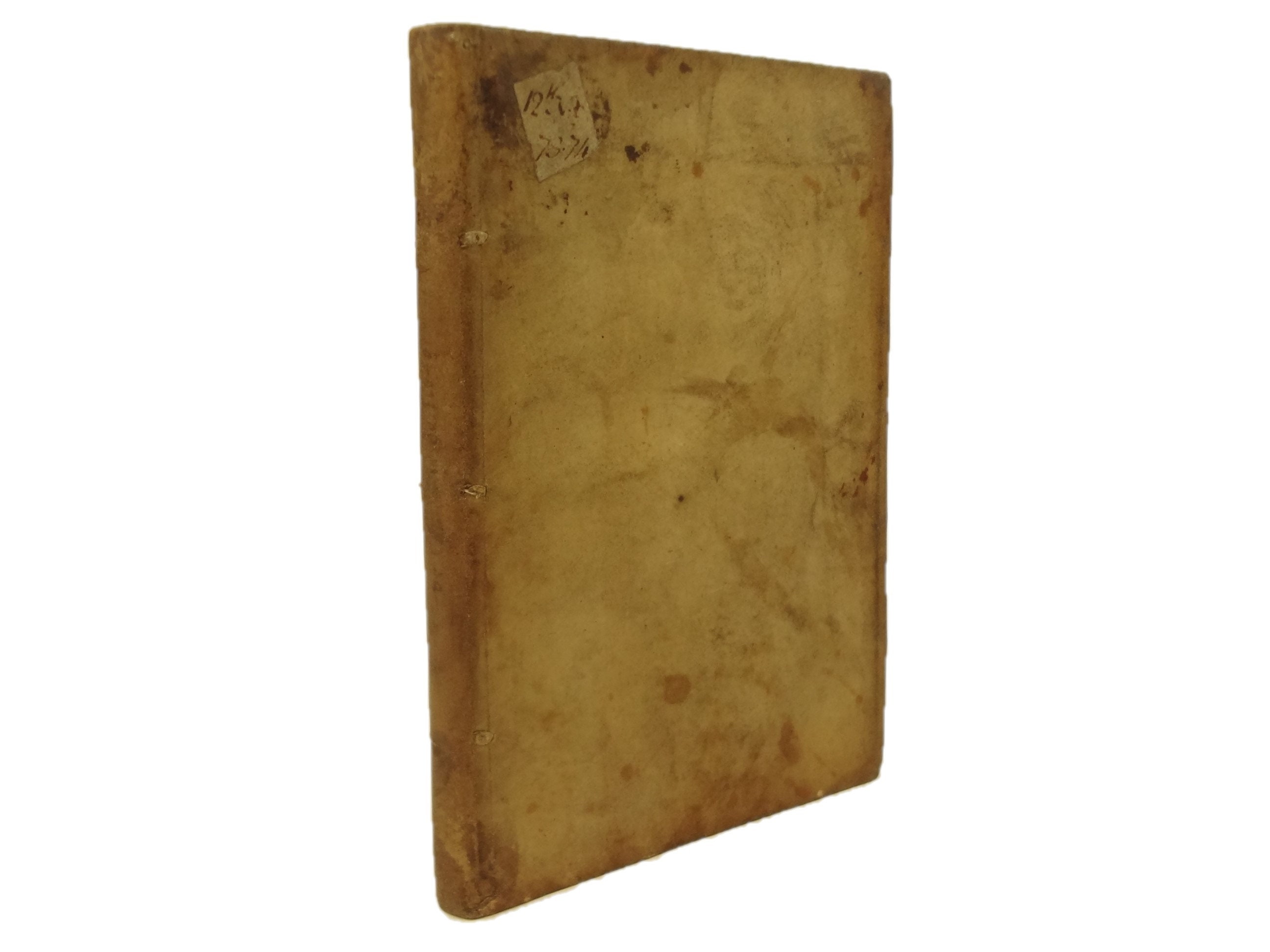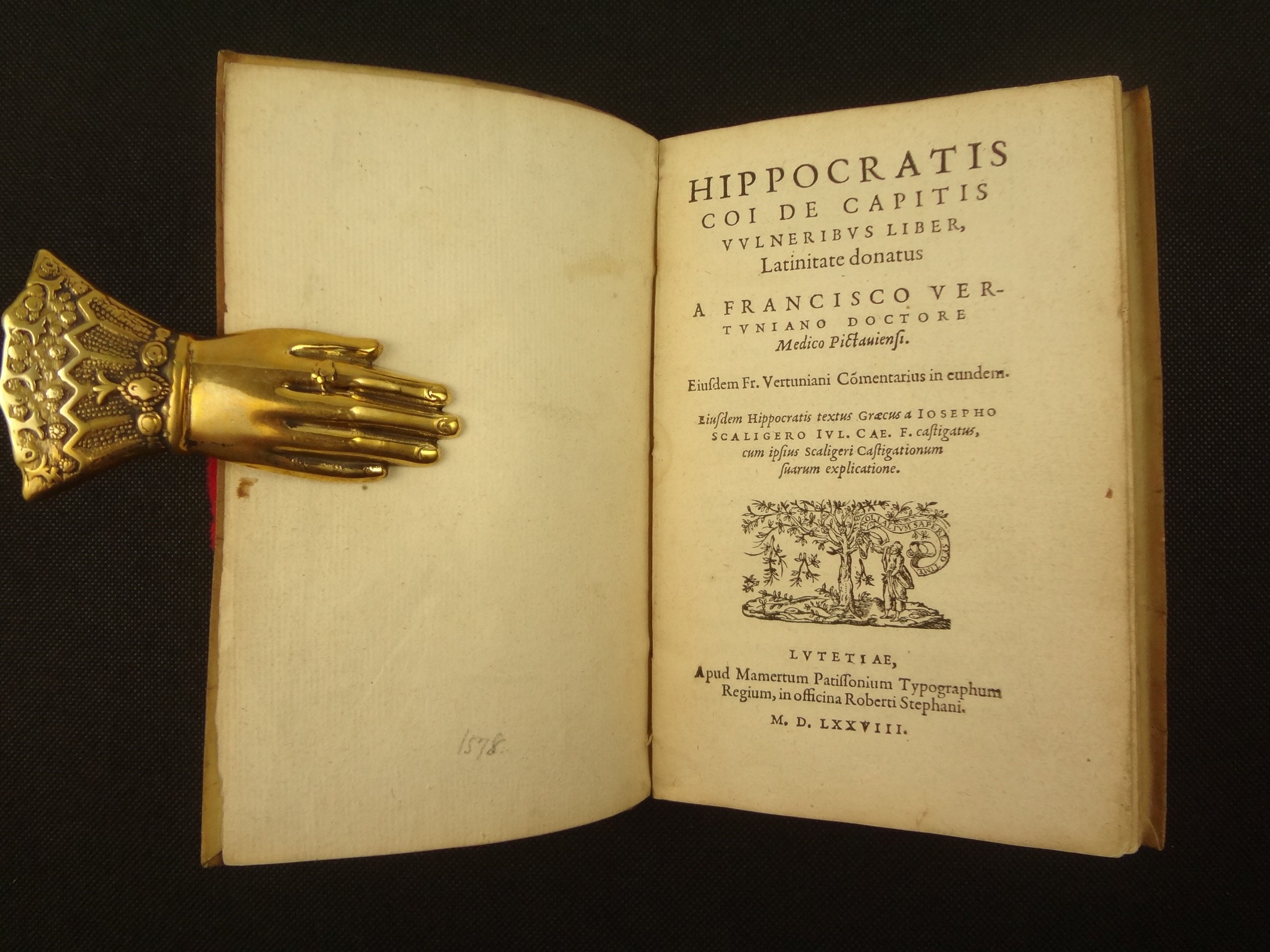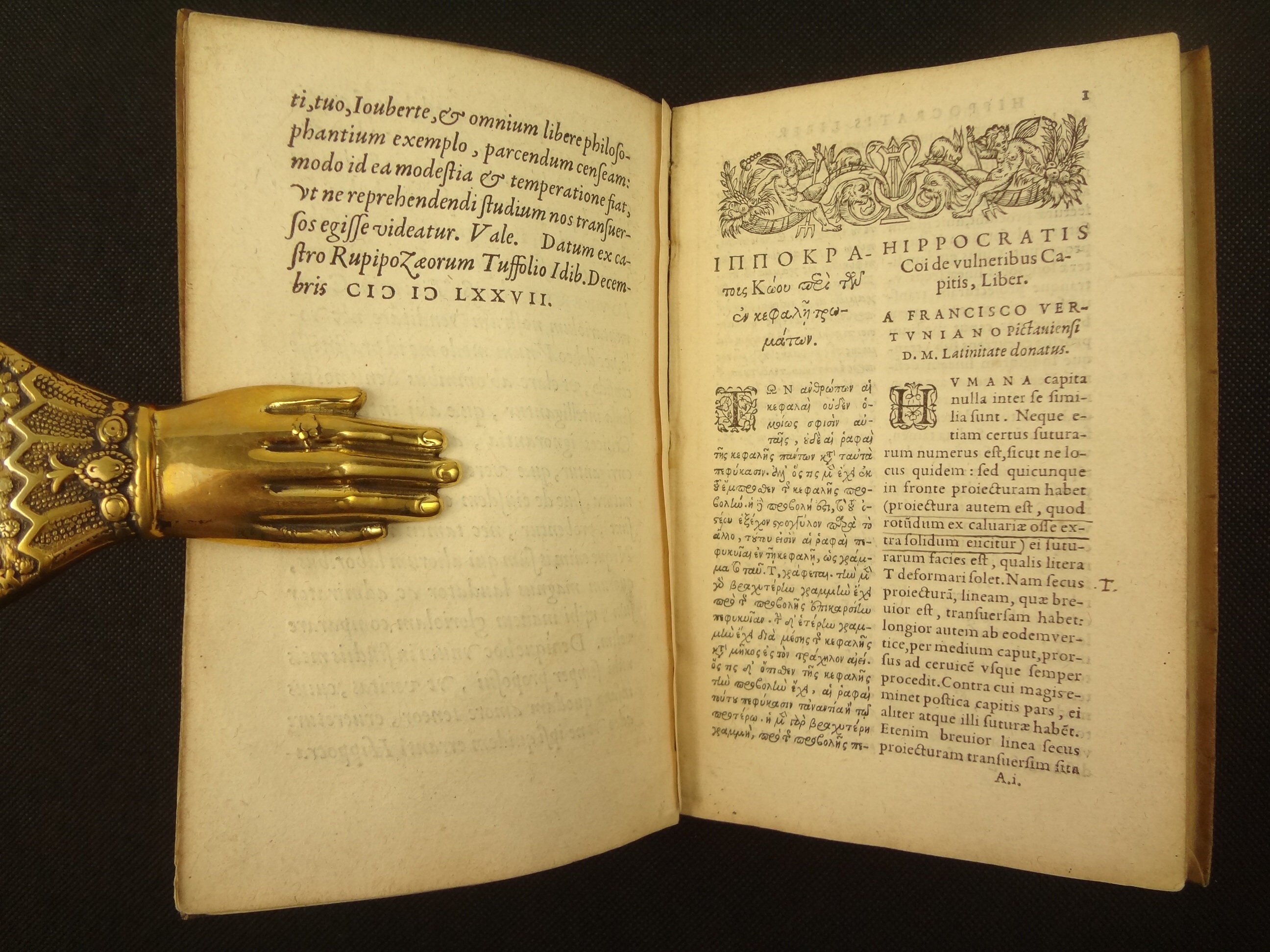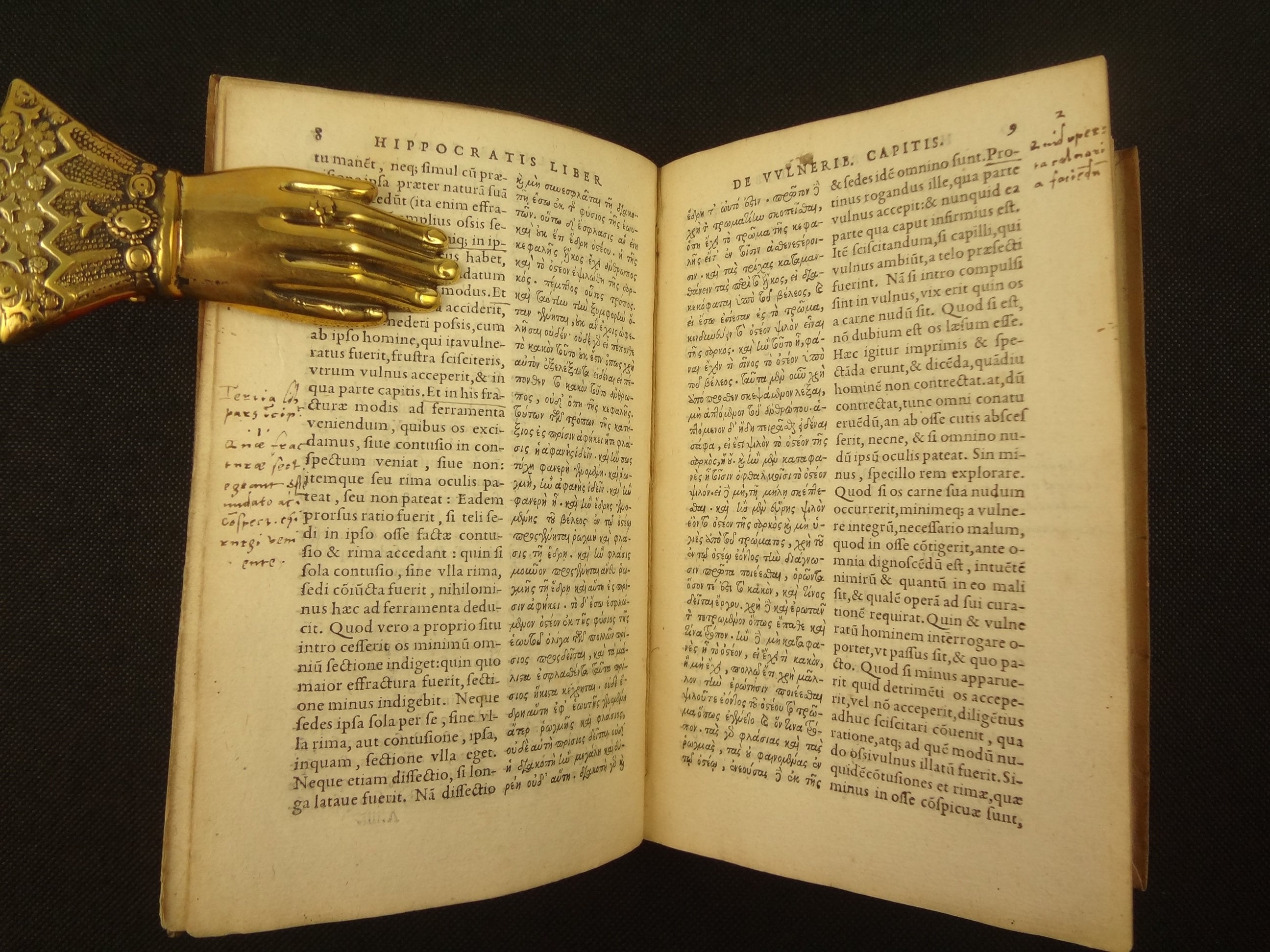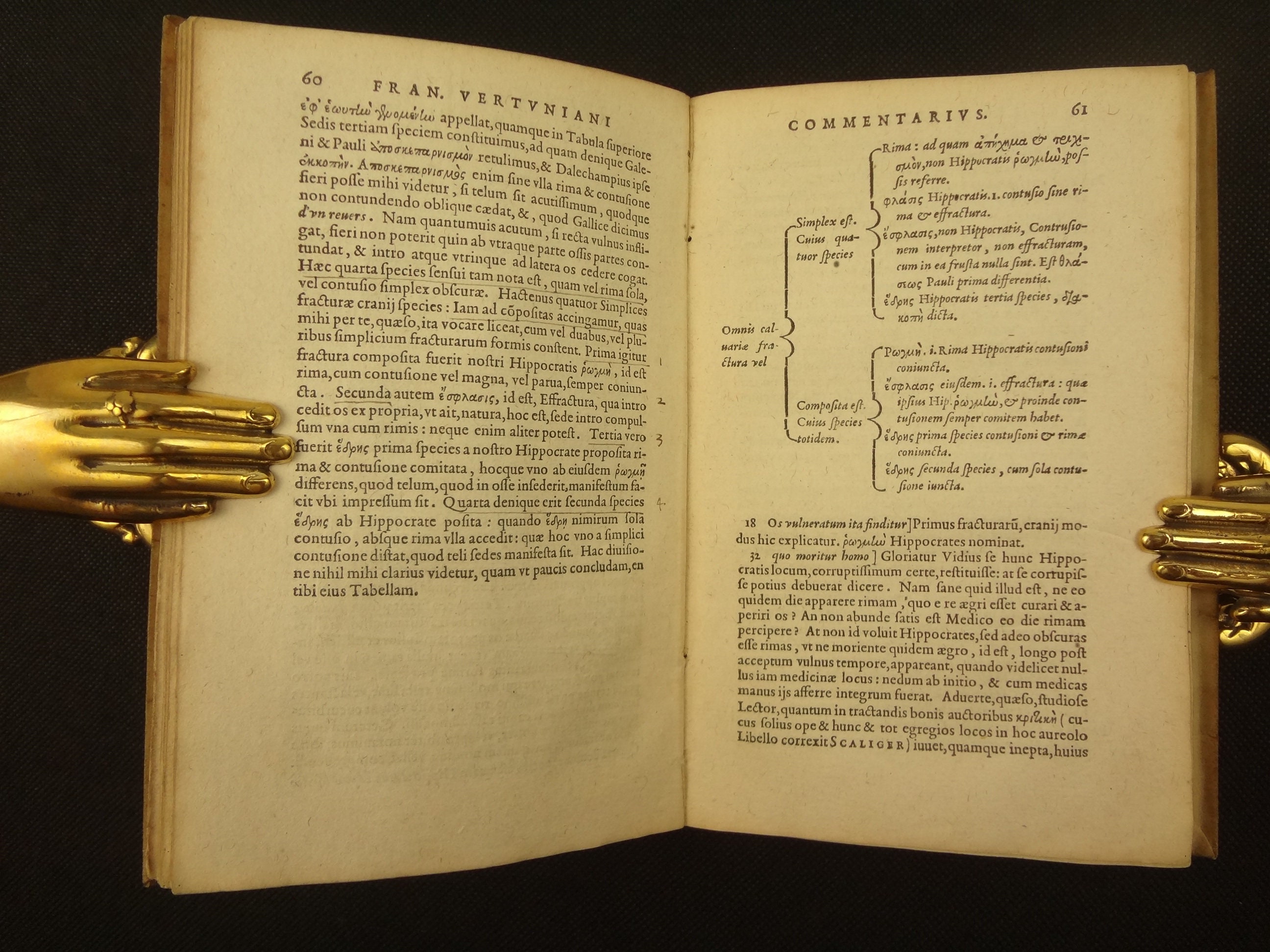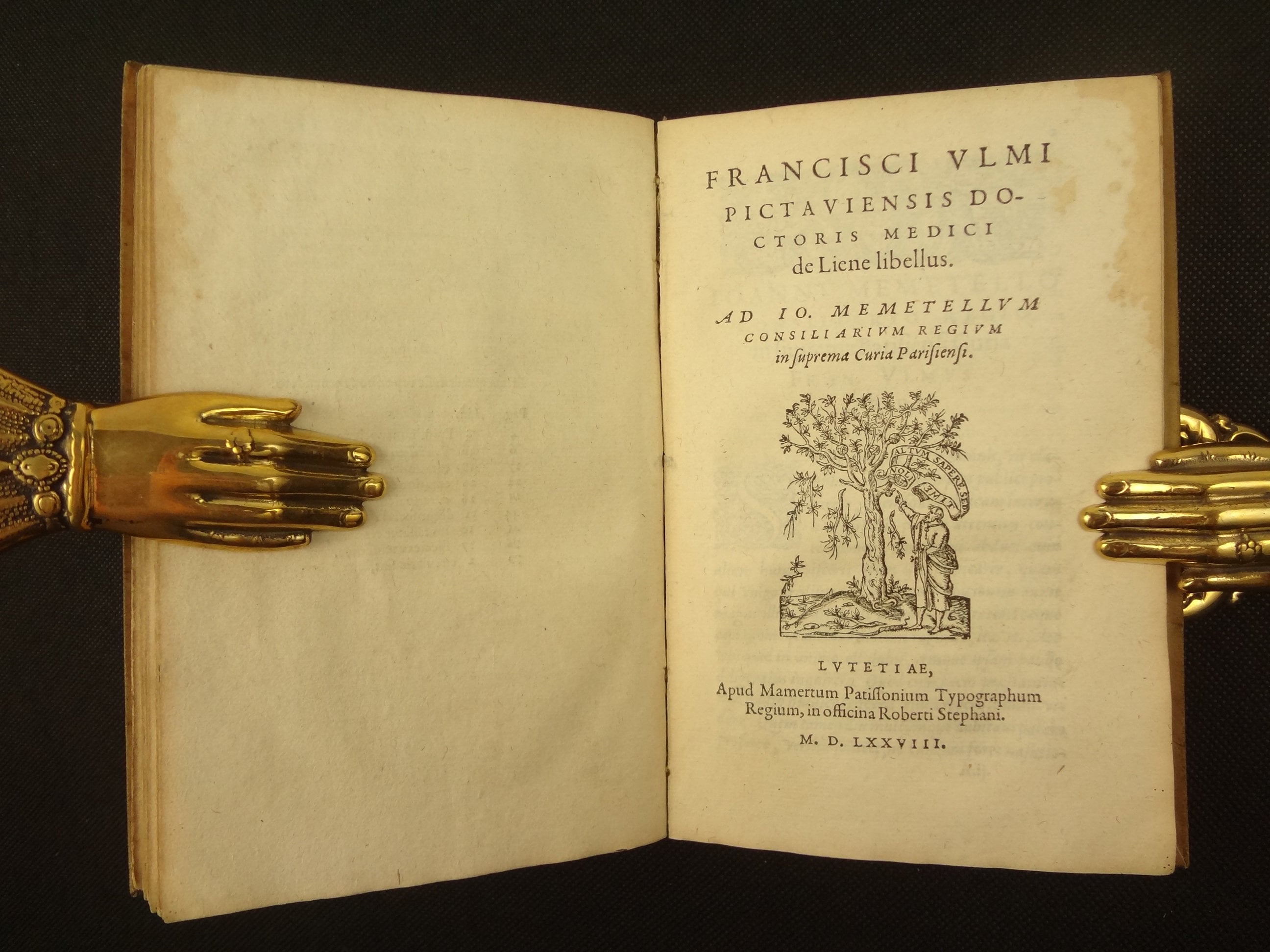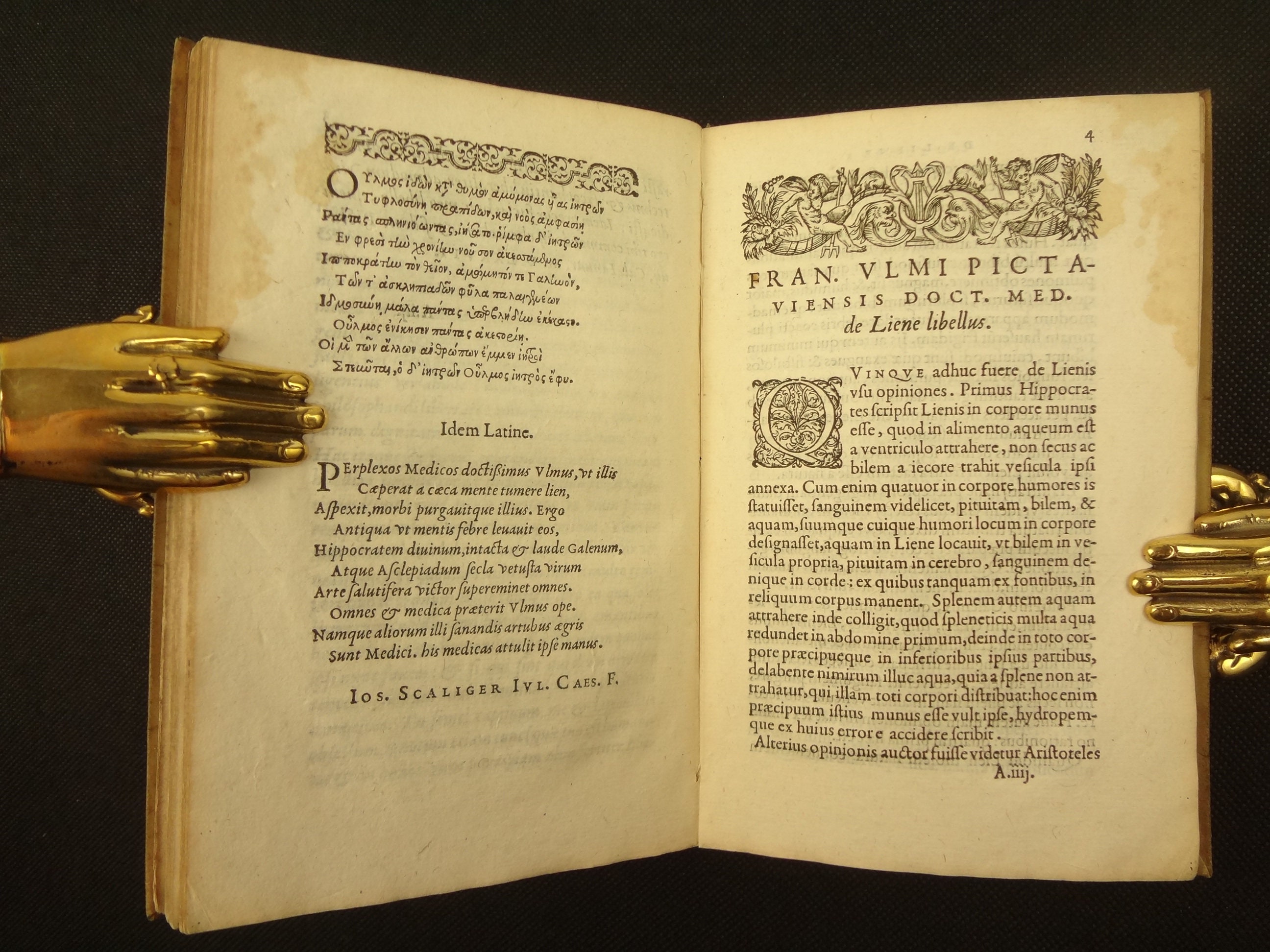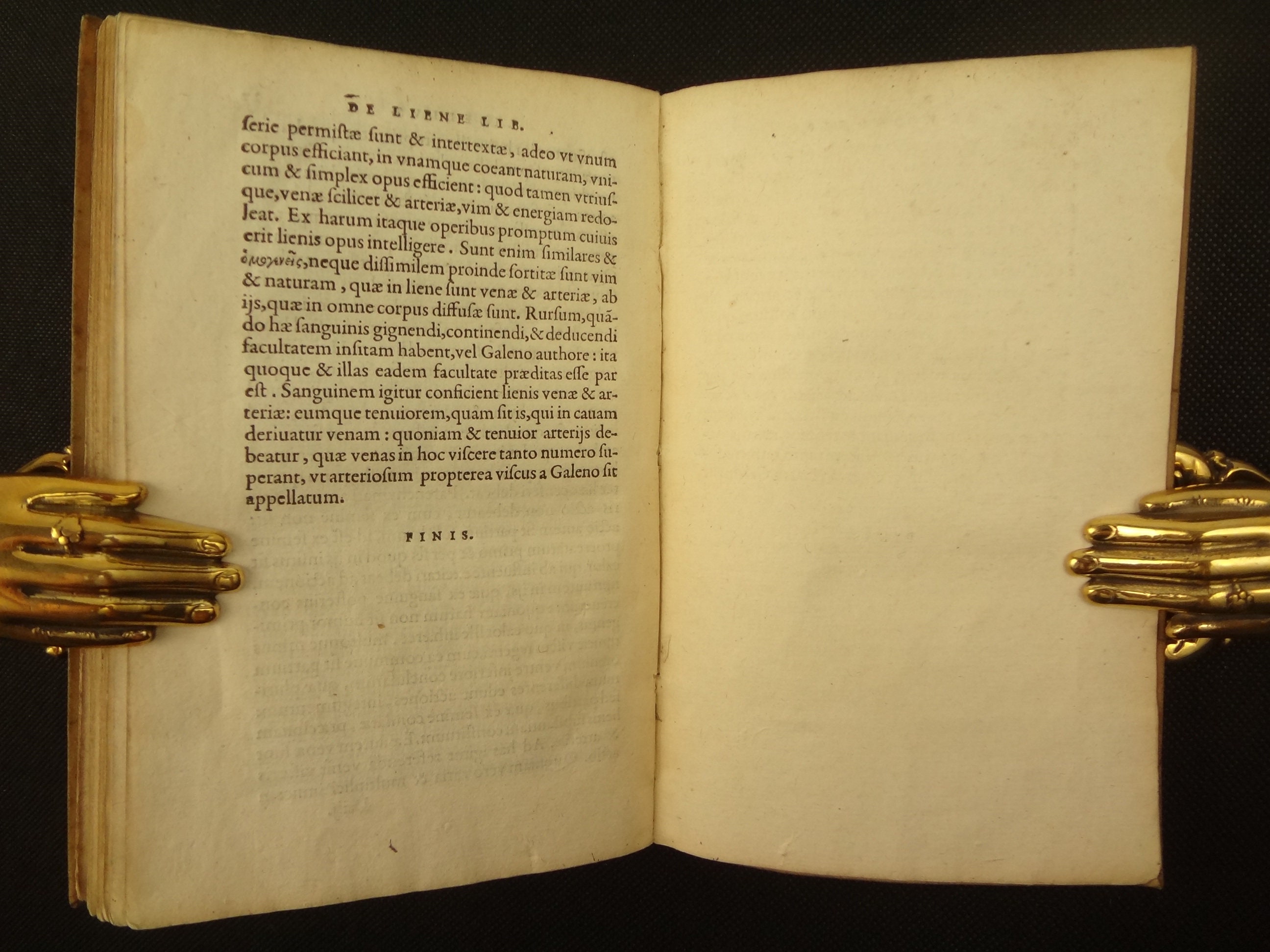Medical. First edition of the first treatise on the spleen. 1578 De Liene Libellus (Umeau), bound after Hippocrates on head wounds.
$1,199.99
Two important medical works, printed in 1578, bound together; Francois Umeau's groundbreaking treatise on the functions of the spleen (first edition) bound behind a stand-alone printing of Hippocrates' treatise on head wounds (parallel Greek and Latin texts).
The Hippocratic work is missing a fold-out woodcut of fractures of the cranium, but is well-annotated in an old hand.
This copy once offered in the Early Science and Medicine catalogue of Deborah Coltham Rare Books for 1,800 British pounds.
About the Works -
De Liene Libellus:
“The De liene libellus (1578), a highly influential book by a very obscure physician from Poitiers, brought debate about the spleen to a head. Unlike the writings on the spleen that have been considered so far, the De liene libellus by Franciscus Ulmus is a short monograph on the spleen rather than a passing chapter in a general anatomy book. Another reason for its impact is the startling modification produced by Ulmus in the Aristotelian idea of the function of the spleen. Ulmus agreed with Aristotle that the spleen made blood, but this was not poor quality venous blood which was added to that produced by the liver. Instead, Ulmus turned his attention to the arterial system. Up to the time of Harvey the origin of venous blood generally was thought to be the liver, whilst arterial blood was believed to be prepared out of a mixture of venous blood and vital spirits in the left ventricle of the heart. Ulmus decided that the use of the spleen was for ‘the precoction or preparation of arterial blood’… Ulmus thus changed the status of the spleen. Instead of being a cleansing or auxiliary blood-making organ it now manufactured an essential substance for the body. This was a radical departure from previous views. The theory did not entail only a change in the function of the spleen, it required major changes in the accepted anatomy and physiology of the blood system.” - Andrew Wear, p. 53, The Spleen in Renaissance Anatomy, 1977
"The first monograph on the spleen, and one of the first treatises on a single organ. The author compares his clinical observations with classical and contemporary sources, including Joubert, Colombo and Botallo. The prefatory Greek and Latin verses lauding Umeau are by Scaliger." - Lane Medical Library of Stanford
De Capitis Vulneribus Liber:
"Hippocrates' treatise On Wounds in the Head represents an excellent source of information regarding the extent of experience with head injuries in classical antiquity. On the basis of clinical observation, the great physician gives an accurate description of the external appearance and consistency of the cranium. Fractures of the cranium are divided into six main categories, each of which is discussed separately, regarding its mechanism, clinical assessment, and treatment. The medical history and clinical evaluation are considered the most important factors when dealing with cranial trauma. Trepanation, a neurosurgical procedure still in practice today, is presented in detail. As a whole, the treatise, the first written work in medical history dealing exclusively with cranial trauma, reveals that Hippocrates was a pioneer in treating head injuries." - Abstract, Hippocrates: A Pioneer in the Treatment of Head Injuries, Panourias
In this edition, the Greek is translated into Latin by the Doctor Francois Vertunien, and includes commentary of Scaliger.
About the Printer -
Mamert Patisson married the widow of Robert Estienne II. This Hippocrates is his only Greek printing.
Bibliographic Details -
De Liene Libellus - Universal Short Title Catalogue number 170429. Found in many of the world's finest libraries (British Library, Bodleian, Wellcome, etc.). Pettegree, Walsby and Wilkinson 80997
De Capitis Vulneribus Liber - Universal Short Title Catalogue number 170420. Also found in many of the world's best libraries. Pettegree, Walsby and Wilkinson 74026
Not uncommon to find these two works bound together.
Physical Attributes -
Measures approx. 16.5 x 10.7 x 1 cm. Limp vellum binding. Both works have the Estienne printer's device at their title page. The Hippocrates has Greek and Latin parallel texts.
Pages - iv, 94, 1 leaf of errata. 27 and one blank leaf at the rear.
Collation - a4, A-F8, A-C8, D4
Condition -
See pictures. Some soiling, darkening, thumbing, etc. to vellum binding. A ticket is on the front cover, with a ms. inscription in an old hand. No endpapers/pastedowns. Some notes on rear of front board in graphite. Hippocrates is missing a fold-out of fractures. Paper toned throughout, with an occasional rust spot, candle ember, chipped edge, dog-eared page, etc.. Ink marks on front fly leaves. Some thumbing throughout. Underlining and marginal annotations in an old hand. Good margins, the annotations are not cropped. Occasional tiny wormholes at fore-edge margin. Intermittent moisture mark right at fore-edge margin; only on a handful of leaves does it reach the text. Fore-edge margin mark on verso of Libellus leaf 20, no text affected. Last blank leaf with more soiling and thumbing than the others.
Shipping from United States
Processing time
1-3 business days
Customs and import taxes
Buyers are responsible for any customs and import taxes that may apply. I'm not responsible for delays due to customs.
Payment Options
Returns & Exchanges
I gladly accept returns
Just contact me within: 7 days of delivery
Ship items back to me within: 14 days of delivery
I don't accept exchanges or cancellations
But please contact me if you have any problems with your order.
Conditions of return
Buyers are responsible for return shipping costs. If the item is not returned in its original condition, the buyer is responsible for any loss in value.
Privacy policy
We do not collect any private information. For billing, Etsy provides the service. We only receive notice that payment was made. The shipping address is provided to us by Etsy, based on what they buyer submitted during check-out. We do not store these addresses. That is the extent of the information that we receive during a transaction.

